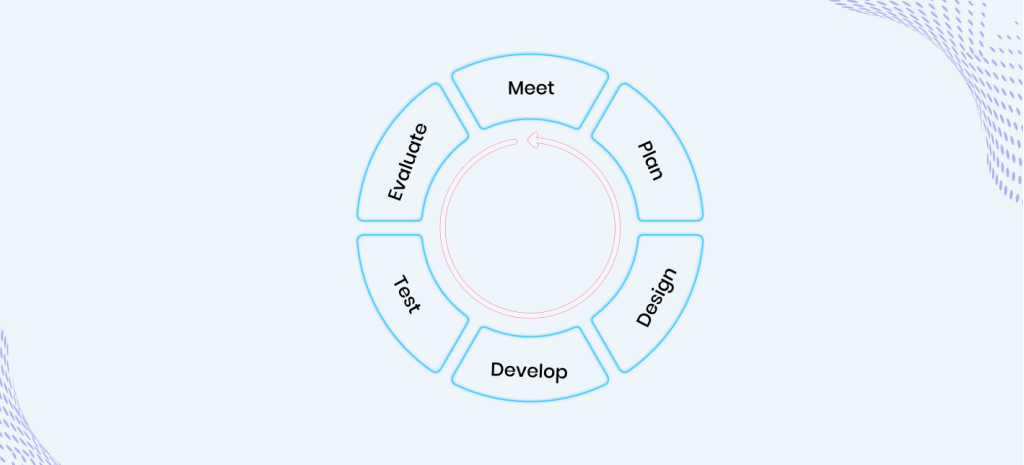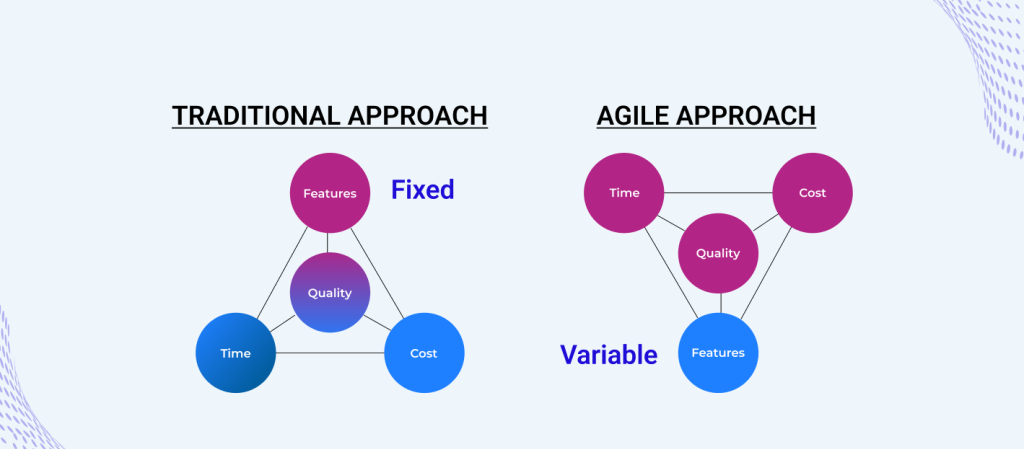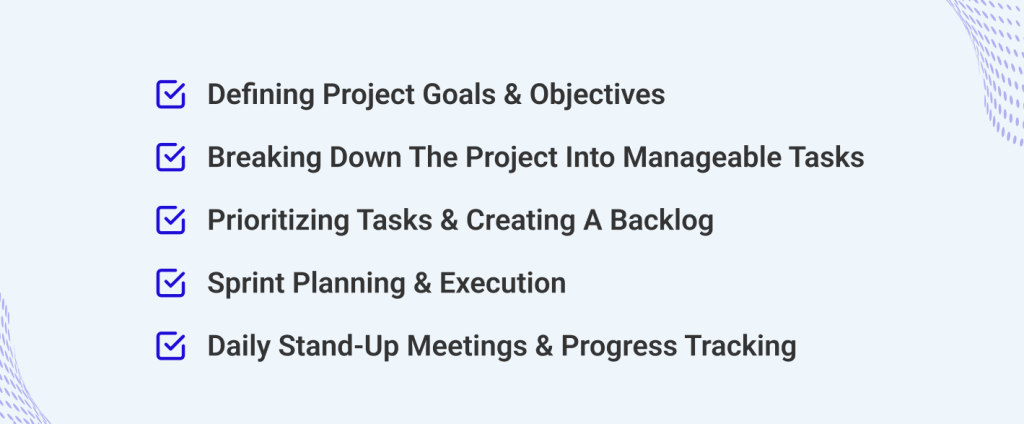To stay competitive in today’s fast-paced and ever-changing business environment, companies across industries are turning to agile methodologies. The Agile Model Process has emerged as a powerful framework that enables organizations to adapt, collaborate, and deliver value to their customers more efficiently. But mastering this process isn’t a walk in the park. It requires a deep understanding of the principles, practices, and tools that drive agility.
In this comprehensive step-by-step guide, we will take you on a journey to becoming an agile expert. From the basics of agile to advanced techniques, we will explore each stage of the process, providing practical tips, real-life examples, and expert insights along the way. Whether you’re a project manager, a software developer, or simply someone looking to enhance your skill set, this guide will equip you with the knowledge and tools you need to succeed in the fast-paced world of agile development. Get ready to unlock your full potential and embrace the power of agility like never before.
The Principles of the Agile Model Process

The Agile Model Process is built on a set of guiding principles that drive its effectiveness. These principles form the foundation of agile development and provide a framework for teams to deliver high-quality products in a collaborative and iterative manner.
Firstly, customer satisfaction is of utmost importance in the Agile Model Process. By placing the customer at the center of the development process, teams can ensure that the final product meets their needs and expectations. Regular feedback loops and continuous customer involvement help validate and refine the product throughout the development cycle.
Secondly, agility is achieved by embracing change. Unlike traditional project management methods that resist change, the Agile Model Process encourages teams to embrace it. By being responsive to changing requirements and market conditions, teams can adapt quickly and deliver value faster.
Lastly, the Agile Model Process promotes collaboration and self-organization. Cross-functional teams work together closely, fostering open communication and knowledge sharing. This allows for faster decision-making, problem-solving, and ultimately, better outcomes.
Benefits of Adopting the Agile Model Process

Adopting the Agile Model Process offers numerous benefits for both organizations and individuals involved in the development process. One of the most significant advantages is increased flexibility. The Agile Model Process allows for iterative development, meaning that teams can respond to changing requirements and market conditions with ease. This flexibility enables organizations to adapt quickly and stay ahead of the competition.
Another benefit is improved transparency. The Agile Model Process promotes regular communication and collaboration, ensuring that all team members are aware of project progress, challenges, and successes. This transparency leads to better decision-making and fosters a sense of ownership and accountability among team members.
Additionally, the Agile Model Process promotes higher-quality deliverables. By breaking down the project into manageable tasks and prioritizing them based on value, teams can focus on delivering the most important features first. This iterative approach allows for regular feedback and testing, resulting in a higher-quality end product.
Agile Model Process Vs. Traditional Project Management

The Agile Model Process differs from traditional project management methodologies in several key ways. Traditional project management follows a linear, sequential approach, where each phase of the project is completed before moving on to the next. This rigid structure can be limiting, especially in fast-paced, ever-changing environments.
On the other hand, the Agile Model Process is iterative and incremental. It allows for continuous improvement and adaptation throughout the development cycle. Rather than waiting until the end to deliver a fully functional product, the Agile Model Process emphasizes delivering value in smaller increments, known as sprints.
This iterative approach enables teams to gather feedback early and often, ensuring that the final product meets the customer’s needs and expectations. It also allows for rapid response to changing requirements, reducing the risk of delivering a product that is no longer relevant or useful.
Key Components Of The Agile Model Process

The Agile Model Process consists of several key components that work together to facilitate effective and efficient development. Understanding these components is essential for mastering the Agile Model Process.
Step 1: Defining Project Goals and Objectives
The first step in the Agile Model Process is to define clear project goals and objectives. This involves understanding the customer’s needs, identifying the desired outcomes, and establishing measurable success criteria. By setting clear goals from the start, teams can align their efforts and ensure that everyone is working towards a common purpose.
Step 2: Breaking Down the Project Into Manageable Tasks
Once the project goals and objectives are defined, the next step is to break down the project into manageable tasks. This involves identifying the specific features and functionalities that need to be developed and creating a backlog of work. Breaking down the project into smaller tasks allows for better estimation, planning, and resource allocation.
Step 3: Prioritizing Tasks And Creating A Backlog
After breaking down the project into tasks, the next step is to prioritize them based on their value and importance. This involves collaboratively determining which tasks should be tackled first, considering factors such as customer needs, business objectives, and technical dependencies. Prioritizing tasks ensures that the team focuses on delivering the most valuable features early on, maximizing customer satisfaction.
Step 4: Sprint Planning And Execution
Once the backlog is prioritized, the team moves on to sprint planning. Sprints are time-boxed iterations, typically lasting two to four weeks, in which a set of tasks is completed. During sprint planning, the team selects a set of tasks from the backlog to be completed within the sprint. The tasks are then broken down further into smaller, actionable items and assigned to team members. The team collaborates to estimate effort, set goals, and define acceptance criteria for each task.
Once the sprint planning is complete, the team moves into the execution phase. Daily stand-up meetings are held to provide updates on progress, discuss any challenges or roadblocks, and ensure that everyone is aligned with the sprint goals. The team works together to complete the assigned tasks, iterating and refining as necessary.
Step 5: Daily Stand-Up Meetings And Progress Tracking
Daily stand-up meetings are a key component of the Agile Model Process. These short, focused meetings serve as a way for team members to sync up, share progress, and address any issues or concerns. The meetings follow a structured format, with each team member answering three questions: What did I accomplish yesterday? What will I work on today? Do I have any blockers?
In addition to daily stand-up meetings, progress tracking is crucial to ensuring that the team stays on track and meets the sprint goals. This can be done using visual tools such as Kanban boards or digital project management software. Tracking progress allows for early identification of bottlenecks or issues and enables the team to make the necessary adjustments to stay on schedule.
Step 6: Reviewing and Adapting the Agile Model Process
At the end of each sprint, the team holds a sprint review and retrospective. The sprint review is an opportunity to showcase the completed work to stakeholders and gather feedback. This feedback helps inform future iterations and ensures that the final product meets the customer’s expectations.
The sprint retrospective is a reflective session where the team discusses what went well, what didn’t go well, and identifies areas for improvement. This continuous feedback loop allows the team to learn from their experiences and adapt the Agile Model Process to better suit their needs.
Tools and Software For Implementing The Agile Model Processes

Implementing the Agile Model Process effectively requires the right tools and software to support collaboration, communication, and project management. There are numerous tools available that cater to the specific needs of agile teams.
One popular tool is Jira, a versatile project management software that allows teams to plan, track, and release software with ease. Jira provides features such as backlog management, sprint planning, and progress tracking, making it a valuable asset for agile development.
Another tool commonly used in agile development is Trello. Trello is a visual collaboration tool that uses boards, lists, and cards to help teams organize and prioritize tasks. It provides a simple yet effective way to manage projects and track progress, making it a popular choice among agile teams.
Additionally, communication tools such as Slack and Microsoft Teams play a crucial role in supporting collaboration and information sharing within agile teams. These tools provide real-time communication, file sharing, and integration capabilities, ensuring that team members stay connected and informed throughout the development process.
Common Challenges And How to Overcome Them
While the Agile Model Process offers numerous benefits, it also presents its fair share of challenges. It’s important to be aware of these challenges and have strategies in place to overcome them.
One common challenge is managing changing requirements. In agile development, requirements are expected to evolve over time. This can pose a challenge when it comes to planning and estimating. To overcome this, it’s crucial to maintain open lines of communication with stakeholders, regularly gather feedback, and have a flexible mindset to accommodate changes.
Another challenge is ensuring effective collaboration and communication within the team. With agile development emphasizing cross-functional teams and collaboration, it’s essential to foster a culture of open communication and trust. Regular team meetings, clear communication channels, and collaborative tools can help overcome communication challenges and ensure that everyone is on the same page.
Managing scope creep is yet another challenge in agile development. Scope creep refers to the tendency for project scope to expand beyond the initial plan. To address this challenge, it’s important to have a well-defined project scope from the start, prioritize tasks effectively, and regularly reassess and reprioritize as needed. Clear communication with stakeholders is vital to managing expectations and ensuring that changes to the scope are agreed upon.
Case Studies of Successful Agile Model Process Implementation
To illustrate the effectiveness of the Agile Model Process, let’s take a look at a couple of case studies where companies have successfully implemented agile methodologies.
1. Spotify
Spotify, the popular music streaming platform, is known for its successful implementation of the Agile Model Process. By adopting agile principles and practices, Spotify has been able to continuously innovate and deliver features that meet the evolving needs of its users. The company organizes its development teams into small, autonomous squads, each responsible for a specific area of the product. This decentralized approach allows teams to work independently, fostering a sense of ownership and accountability.
2. Sony
Sony was looking for a lightweight, easy-to-understand software development and project management process that would help cultivate teamwork. After conducting a brief survey of potential consulting firms, Sony decided to adopt the Scrum approach.
Scrum is an agile methodology that works well in complex projects with high risks. It is based on the idea of breaking down projects into smaller, more manageable tasks. This allows teams to work more iteratively and deliver value to customers more quickly.
The introduction of Scrum at Sony led to a number of benefits, including:
- A defined project management and development process
- Increased teamwork among project partners
- Improved communication and collaboration
- Faster delivery of value to customers
3. Google
Google is a company that uses agile methods of software development, such as Scrum. This means that teams at Google are self-organizing and choose the technology and method that can best be applied to problem-solving.
One of the projects in which the Scrum methodology was used was the development of Google AdWords. This project was a success, and it helped to demonstrate the effectiveness of agile methods at Google.
Here are some of the benefits that Google saw, after following agile methodologies:
- Increased speed and flexibility
- Improved communication and collaboration
- Increased customer satisfaction
Final Thoughts
Mastering the Agile Model Process is essential for organizations and individuals looking to thrive in today’s fast-paced business world. By understanding the principles, practices, and tools that drive agility, teams can deliver value more efficiently, adapt to changing requirements, and stay ahead of the competition. The step-by-step guide provided in this article has equipped you with the knowledge and tools you need to succeed in agile development. Embrace the power of agility and unlock your full potential to drive success in your projects and organizations.
Take Your Web Development to New Heights with Aipxperts Agile Scrum Master & Project Management Services!
When it comes to mastering the Agile model process and ensuring seamless project execution, Aipxperts stands out as the ideal choice for hiring Scrum Masters and Project Managers. With a proven track record of creating robust and efficient web applications, we are well-equipped to cater to your unique requirements. By partnering with Aipxperts, you gain access to a talented and experienced team that can transform your ideas into reality and take your web development to new heights. Don’t settle for anything less than excellence. Choose Aipxperts for a journey toward successful and agile software development.
Also read below what our CEO, Hardik Shah has to say about the Agile Model Process.
Mastering the Agile Model Process | Hire experienced Scrum masters and Project managers from Aipxperts. Contact us for project estimates and enjoy a 15-day risk-free trial period.











